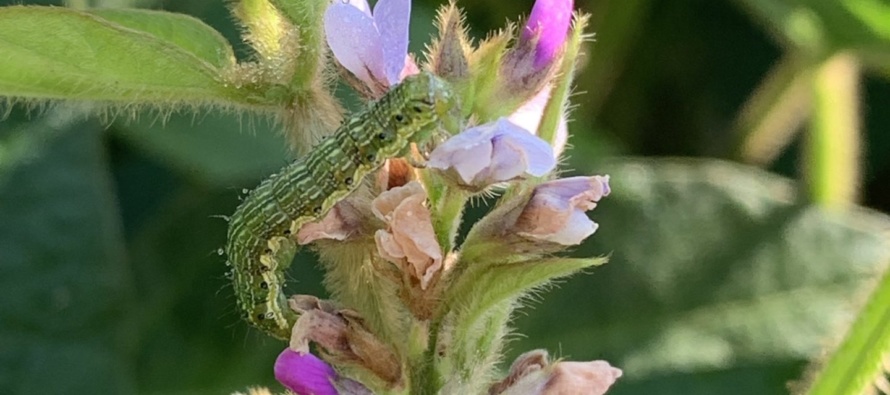The Use of Biological Insecticides for Bollworm Management in Soybean

Related Articles
- 2010 Soybean And Corn Variety Trial Data 3
- Mississippi Cotton Insect Situation of 2010: A Look Back 3
- Rice Insecticidal Seed Treatment Recommendations for Mississippi in 2011 0
Latest Tweets
There are several biological insecticide options labelled in soybean; however, the most readily available and widely used product is Heligen. In the last week, many people have asked about the use of Heligen with the low bollworm numbers showing up in some soybean fields. Heligen is not a traditional insecticide and needs to be treated as such. Expectations and limitations need to be understood when using biological products. Moving into next week, there will likely be an increase in the number of bollworms detectable with a sweep net, especially in later planted beans that are flowering and with open canopies. It possible that many will run into situations with subthreshold levels leaving you questioning the next best management strategy. Questions then arise do you spray and are populations high enough to justify the cost of a diamide or do you let them ride hoping populations will play out or crash?
This is a situation where both the dynamic threshold and Heligen come into play. By utilizing the dynamic threshold with the current market price (approximately $9), the cost of Heligen plus the application (approximately $10), you are looking at a threshold of 4.9 larvae per 25 sweeps (Table 1). Unlike if you are using 14oz of Prevathon (using the dynamic threshold), the treatment threshold would be ca. 9.8 larvae per 25 sweeps. The advantage to utilizing this dynamic economic threshold over the standard (static) economic threshold, is the ability to adjust based off market prices and input cost.
Things to remember when using Heligen:
- The goal is to target worms smaller than 0.5 inch. Do not use this product if larvae are greater than 0.5 inch.
- Generally, larvae will stop feeding within 3 days of the application and die within 9 days.
- The rate of death will be dependent on temperature. The larvae that die from Heligen will generally release enough virus to cause secondary infections.
- Rate ranges are 1.28-1.6 oz per acre; however, we recommend staying toward the middle to high end of the rate range depending on numbers and larval size.
- Heligen is a virus so it is slower acting. Generally, in 5-7 days you will see larvae move toward the top of the canopy. Often sweep net numbers will actually increase in your samples 5-7 days after application. This is normal and not a sign of a control failure. As larvae become infected and move to the top of the canopy you simply catch more in the sweep net. Often, this is a sign that the product is actually working.
- Heligen is typically not a “zero out” product like many of the other products we use on bollworm in soybean. It typically keeps numbers well below threshold where economic damage is not occurring.
- In fields where larval numbers are high or where worms are greater than ½” use alternate products like Besiege, Prevathon, Elevest, or Intrepid Edge.





Let me tell You a sad story ! There are no comments yet, but You can be first one to comment this article.
Write a comment